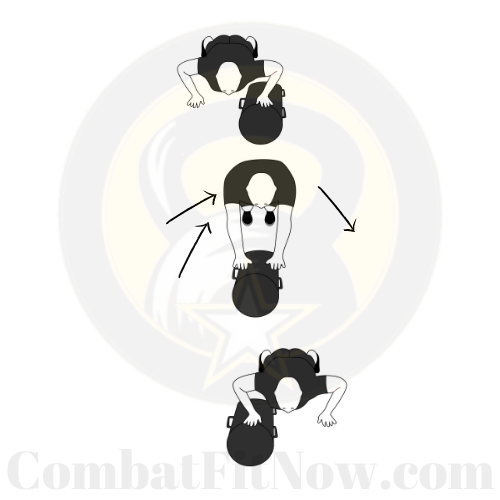Plyometric Push Up – Side to Side on an incline are an advanced variation of the traditional push-up that adds explosive power and lateral movement. Here’s a step-by-step guide on how to perform this exercise:
Video Instructions On How To Do the Plyometric Push-Up – Side to Side
Muscles Targeted:
- Chest
- Shoulders
- Triceps
- Core
Equipment Needed:
- Incline surface (e.g., Plate, Sandbag or Plyo Box)
Instructions:
- Setup:
- Place your hands slightly wider than shoulder-width apart on an incline surface, such as a bench or plyo box.
- Assume a plank position with your body in a straight line from head to heels.
- Basic Push-Up Position:
- Start in the top position of a push-up with your arms fully extended.
- Engage your core and maintain a straight line from head to heels.
- Side-to-Side Motion:
- Lower your chest toward the incline surface by bending your elbows.
- Explosively push off the incline surface with enough force to lift your hands off.
- As you push up, move your hands laterally to one side, landing with your hands positioned on the incline surface.
- Lower your chest again and repeat the explosive push-off, this time moving your hands laterally to the opposite side.
- Continue this side-to-side motion with each repetition.
- Controlled Movements:
- While the explosive push-off is important for the plyometric aspect, maintain control during the lateral movement to ensure proper form.
- Land with soft elbows to absorb the impact and protect your joints.
- Breathing:
- Inhale as you lower your chest toward the incline surface.
- Exhale forcefully as you explode off the surface and move laterally.
- Repetition and Sets:
- Aim for 8-12 repetitions per set.
- Perform 2-3 sets with adequate rest between sets.
- Tips:
- Ensure that your body remains in a straight line throughout the exercise.
- Land with your hands in a stable position on the incline surface.
- If you’re new to plyometric exercises or have any joint issues, start with a lower incline and progress gradually.
- Safety Precautions:
- Listen to your body, and if you experience pain (other than typical muscle fatigue), stop the exercise.
- If you have any existing medical conditions or concerns, consult with a fitness professional or healthcare provider before attempting plyometric exercises.
Remember to warm up before starting any workout routine and modify the difficulty based on your fitness level. As with any exercise, proper form is crucial to prevent injury and maximize the effectiveness of the movement.



